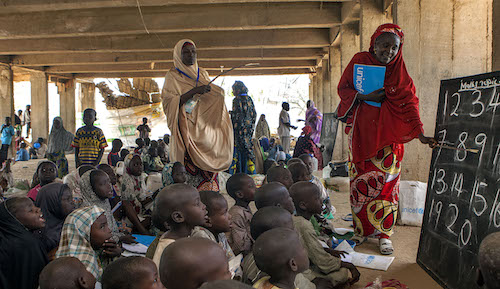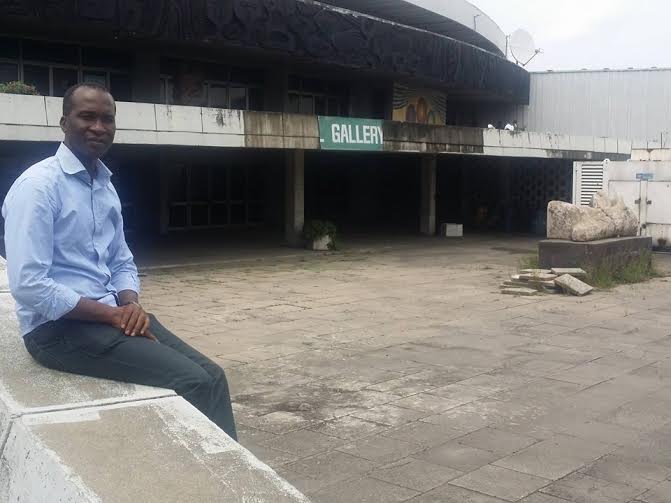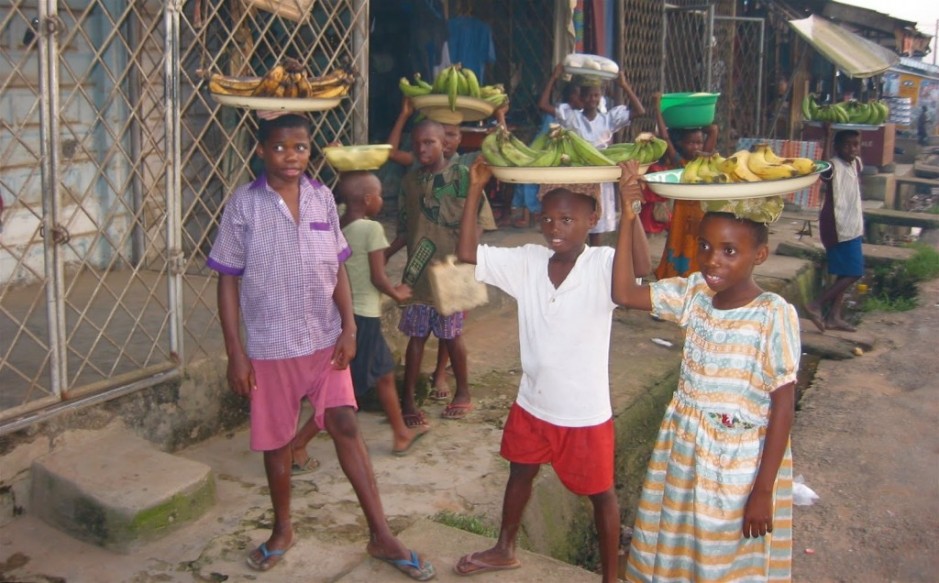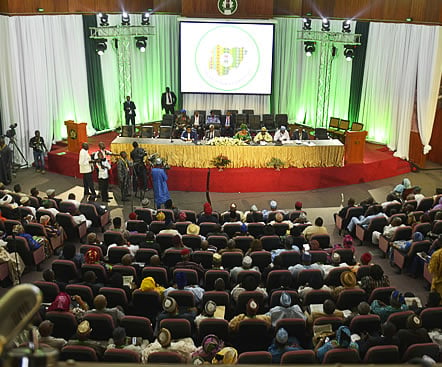BY JIBRIL SHEHU
In recent years, education in northern Nigeria has reached a point of collapse. Sokoto, my home state, is one of the states most affected. To lend some perspective: In 2015, the National Universities Commission (NUC) ranked Usmanu Dan Fodiyo University Sokoto (UDUS) and Sokoto State University (SSU) 82nd and 104th in Nigeria respectively.
Encouraging however, is the 2016 ranking of 37th for UDUS, while SSU couldn’t make top 100. Based on a 2010 report by Sokoto State Ministry of Education on the State Strategic Education Sector Plan (SESP) 2011-2020, the gross and net enrollment rates were 71 percent and 55.5 percent respectively for the primary school-aged population. While the net attendance rate for the 2009-2010 academic year was 68 percent, completion and gender gap rates were at 40 percent. Thus, 44.5 percent of school-aged children were not enrolled in school in 2010. The report puts the enrollment rate for boys at 69.8 percent and 30.2 percent for girls, as compared to the national average of 86 percent and 75 percent respectively. Recent outrage, expressed largely through impassioned internet debate, has ignited an awakening to the present dire state of affairs.
Last year, we began a social media campaign (#TransformArewa), which brought to the fore some of the most notable educational deficiencies and vulnerabilities of our present educational system, as well as the consequences. My research discovered the colossal disparity between the standard and quality of education in the North compared to the South. A significant difference exists between the performances of Northern students compared to our Southern counterparts. This can most likely be attributed to a lack of structure and attention given to education in the North. In addition to low quality of education, our school infrastructures are dilapidated and often poorly equipped.
Advertisement
The National Common Entrance Examination cutoff marks released by Federal Ministry of Education shows that while the highest cutoff marks in the country were 139 in 2013 and 66 in 2014, particularly alarming were cutoff marks in some Northern states for males and females respectively. In 2013: Zamfara (4 and 2), Taraba (3 and 11), Yobe (2 and 27), Sokoto (9 and 13) and Kebbi (9 and 20). In 2014: Sokoto (15 and 7), Zamfara (14 and 12), Bauchi (both 18), Taraba (both 19) and Yobe (both 20).
According to statistics of results released by WAEC in 2014, eight of 36 bottom-ranked states recorded worse than a 10 percent score (5 credits or more including English and Mathematics). These include: Adamawa (8.75 percent), Jigawa (7.4 percent), Sokoto (7.12 percent), Zamfara (6.65 percent), Kebbi (6.3 percent), Gombe (5.68 percent), Bauchi (5.28 percent) and Yobe (4.85 percent). These are all Northern States, and in fact the bottom 13 states were all from the North. WAEC results released in 2015 were also not heartening. The following eight Northern states were ranked at the bottom: Yobe (37th), Zamfara (36th), Jigawa (35th), Gombe (34th), Katsina (33rd), Bauchi (31st) and Sokoto (30th).
For several years, the North has been at a great educational disadvantage, a condition which will continue once there’s no drastic measure or robust intervention to halt it. This obvious trend should appall our leaders, who witness this persistent plague upon our region, but do nothing but fold their arms and watch. A temporary lapse in judgment can be forgiven, but a myopic leader who is immune to these issues should be questioned, both as to his moral conscience and to his qualifications to engage in governance. We need visionary transformational leaders who will employ experts that possess both technical merit and knowledge of the nuances of these educational problems. We may not see the scale of destruction this has caused our region now, but we will soon see how collectively impacted we all are in terms of economic and industrial growth, employment and security if nothing is done.
Advertisement
One such leader is Governor Aminu Waziri Tambuwal. As soon as Governor Tambuwal was inaugurated, I paid close attention to the state’s activities. I was initially critical of what I perceived to be a slow start, but quickly learned that Tambuwal and his team were in fact crafting a plan to solve the education crisis, an issue whose urgency has no equal.
Governor Tambuwal introduced a bill which makes obtaining education compulsory and punishes non-compliant parents. The bill, which is currently at the public hearing stage, will ensure that education is not just a privilege, but a right of every child which must not be denied. Governor Tambuwal then began to address Girl-Child education by introducing monetary incentives for rural mothers who allow their daughters to attend school instead of street hawking.
In the same vein, Alhaji Sani Yakubu, a member of the state house of assembly, has introduced a bursary scheme for girls in his constituency. The scheme will provide the girls with ₦2,000 monthly allowance, school uniforms and exercise book for every school term. Such laudable initiatives should be both welcomed and expanded throughout the state, especially in the rural areas where most cannot afford sending their children to school. Based upon the measly proportion of girls who attend school compared to boys, it is safe to assume that the most untapped human resource in the North is the female workforce.
Tambuwal’s greatest strides were made when he declared a state of emergency in education. This effectively signaled that the government understood what it takes to remedy a catastrophic problem and that it would no longer turn a blind eye. Our once-archaic education system will now be overhauled and upgraded, putting us back on the academic map. Every bureaucratic process that could impede the implementation of reform will be circumvented.
Advertisement
Sokoto now has a clear plan, and Tambuwal didn’t stop there. He allocated ₦34.5b – the highest of any sector – to education in the 2016 budget. This represents a staggering 29 percent of the budget (UNESCO had recommended 26 percent).
According to the 2010 SESP, the primary school teacher-to-pupil ratio in Sokoto was 1:47, which is better than the current 1:66 teacher-to-pupil ratio. Even more disturbing is the “qualified teacher”-to-pupil ratio which was an outrageous 1:144. Governor Tambuwal’s response was to recruit 500 teachers trained by UNICEF to boost manpower in secondary schools. Furthermore, Tambuwal recently announced he will be employing 10,000 qualified teachers, the exact number which was recommended to bridge the gap by the technical committee he established to advise him on these issues. Earlier this year, Tambuwal began construction of special estates (teachers’ villages) across different districts as part of an incentive package for teachers posted to teach in the rural areas. This was his effort to further extend access to education in the rural areas. Governor Tambuwal then signed a Memorandum of Understanding (MoU) with the National Teachers institute (NTI) in an effort to improve the quality of education and maintain the gains already recorded.
Throughout his first year, billions of Naira have been earmarked or expended by Governor Tambuwal for renovations of schools, intervention programs, or support in the payment of school and exam fees (8000 students for JAMB alone) for students studying abroad or locally. He recently earmarked another ₦1 billion to establish a senior secondary school in Gudu local government to increase access to education. Until now, Gudu was the only local government in Nigeria without one. In order to sustain his effort, a one percent levy of all contracts awarded will be set aside for the sole purpose of funding education in Sokoto State. We have already started to realize the dividends of this investment as almost 1.2m students have enrolled in the basic education schools for the 2015 – 2016 academic year, a huge increase from recent years.
While we celebrate the achievement of these monumental milestones with Governor Tambuwal on education, we must not become complacent. We must continue supporting him but also develop KPIs to monitor, evaluate and track his progress, as there is still much to be accomplished. These Include: More effort on Girl-Child education; Traditional leaders must lend their voices to the emphasis on education; Create an encouraging environment that supports innovation, creativity and continuous learning for both students and teachers; Incentivize teaching to make it a more attractive profession; Parents, communities and professionals must become more involved to guide and develop mentorship programs for the next generation leaders; Review early-childhood education programs as what we currently have is as good as non-existent. Lastly, we need expeditious implementation of these policies.
Advertisement
It is no secret that the North is being left behind in education. We live in a society where some parents have become obstacles to their children’s education through begging (Almajiranci) and hawking (Talla); while some teachers have become an impediment to the academic development of their students’ education through substandard teaching techniques. Some youths are therefore being denied the opportunity to realize their talents and a viable path to a rewarding career. They need a voice, and we should give it to them, because collectively, we can steer this sinking ship around to safety.
*Shehu, a structural engineer, lives in Cleveland, Ohio, USA. He can be reached on [email protected], @EngrShehu
Advertisement
Views expressed by contributors are strictly personal and not of TheCable.
Add a comment






